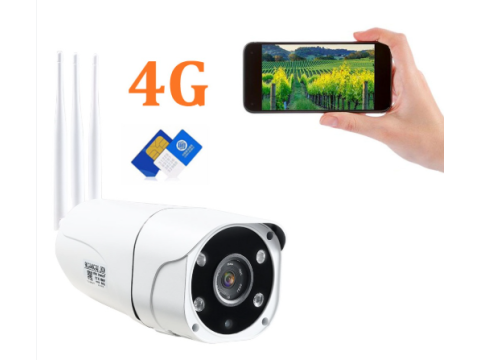Features of 3G Video Surveillance
Modern tech moves fast, and bulky, cable-dependent setups are being replaced with compact, easy-to-use devices. Let’s break down what 3G video surveillance systems bring to the table.
What is 3G Video Surveillance?
3G cameras are much like traditional surveillance systems, but their key difference lies in how they transmit data.
Unlike digital or analog systems, a 3G camera sends data via cellular networks like EDGE or GPRS. Essentially, it's a combo of a high-resolution digital camera and a 3G modem.
In terms of:
- Focal length and field of view,
- Sensitivity,
- Features like automatic gain control (AGC) or backlight compensation,
3G cameras match regular cameras. What sets them apart is the built-in modem, which unlocks some unique perks.
Key Benefits of 3G Cameras
No dependency on Wi-Fi or cable internet
All you need is a standard SIM card from any mobile carrier with 3G network support. These days, most carriers offer this. Setup is simple, and users face no hassle right from the start.Quick, auto-configuration
Once the SIM card is inserted, the camera configures itself automatically, saving you time and effort.Mobile-friendly streaming
The video feed can be sent to your smartphone, tablet, or PC via mobile internet.Flexible power options
Any compatible power source can keep the system running smoothly.Universal access
To view the camera feed live, you just make a video call to the SIM card number inside the camera. No Wi-Fi? No problem. As long as the area has cellular coverage, the camera works perfectly.
Core Features and Applications
3G cameras often come with these popular features:
- Infrared night vision,
- Motion detection,
- Audio channels (via built-in microphones).
They’re essentially like traditional systems, just with a different way of transmitting video.
Pro Tip: You can even use analog cameras for remote viewing through a 3G connection, provided the DVR (Digital Video Recorder) they’re connected to supports a 3G modem. This setup also allows video recording on the DVR’s hard drive, creating a proper video archive.
Cloud Storage Option
For added convenience, many users opt for cloud-based surveillance services. This minimizes upfront hardware costs and provides a reliable storage solution for video data.
Best Use Cases for 3G Surveillance Systems
3G video surveillance is ideal for locations without wired internet access. Examples include:
- Vacation homes: Perfect for monitoring your summer getaway when you’re away.
- Rural properties: Great for areas where traditional internet options are unavailable.
- Temporary setups: Construction sites or mobile offices benefit from the portability of 3G systems.
Even suburban homeowners can take advantage of 3G cameras when wireless remote access is needed.
Installation follows the same general rules as any other surveillance system—just with a greater focus on areas with good cellular signal strength.
In Summary
3G cameras shine where connectivity is limited. Their independence from Wi-Fi and wired internet, ease of use, and remote access capabilities make them a great choice for off-grid setups or areas with weak infrastructure. With the option to integrate analog cameras and DVRs or leverage cloud services, 3G systems provide a practical and versatile surveillance solution.

